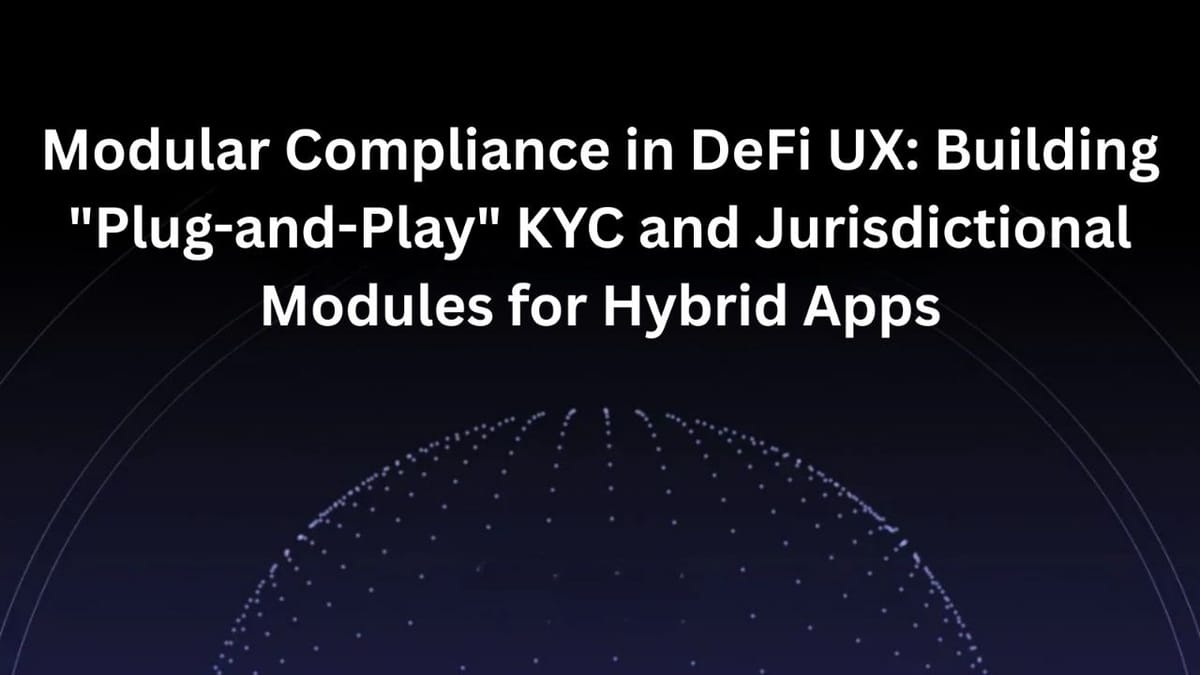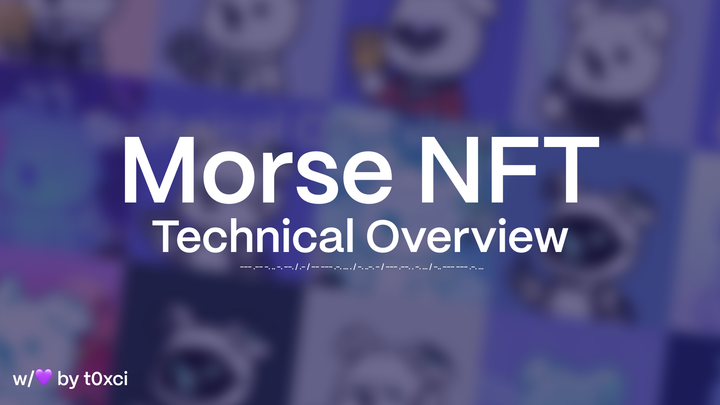Modular Compliance in DeFi UX: Building “Plug-and-Play” KYC and Jurisdictional Modules for Hybrid Apps

Introduction
The decentralized finance (DeFi) landscape has evolved rapidly, presenting both opportunities and challenges for developers and users alike. As DeFi applications gain traction, the need for compliance with regulatory frameworks becomes increasingly critical, especially when dealing with real-world assets (RWAs) and mass-market adoption. This article explores the concept of modular compliance in DeFi user experience (UX), focusing on how developers can create flexible, “plug-and-play” Know Your Customer (KYC) and jurisdictional modules for hybrid applications.
1. Understanding DeFi and Its Regulatory Landscape
1.1 What is DeFi?
Decentralized finance (DeFi) refers to a financial ecosystem built on blockchain technology that aims to recreate traditional financial systems such as lending, borrowing, trading, and insurance without intermediaries. DeFi applications leverage smart contracts to automate processes, enhance transparency, and reduce costs.
1.2 The Regulatory Challenge
As DeFi continues to grow, regulators worldwide are scrutinizing the space to ensure consumer protection, prevent money laundering, and uphold financial stability. The challenge lies in balancing innovation with compliance. Traditional financial institutions are subject to strict regulations, including KYC and anti-money laundering (AML) requirements. DeFi projects, however, often operate in a decentralized manner, making it difficult to enforce these regulations.
1.3 The Need for Modular Compliance
To address regulatory concerns while maintaining the core principles of DeFi, developers can adopt a modular compliance approach. This involves creating compliance components that can be easily integrated into DeFi applications, allowing for flexibility and adaptability to different regulatory environments.
2. The Concept of Modular Compliance
2.1 What is Modular Compliance?
Modular compliance refers to the design of compliance systems that can be broken down into smaller, interchangeable components. These components can be independently developed, tested, and deployed, allowing developers to customize their applications based on specific regulatory requirements.
2.2 Benefits of Modular Compliance
- Flexibility: Developers can choose which compliance modules to integrate based on their target market and regulatory environment.
- Scalability: As regulations evolve, developers can update or replace specific modules without overhauling the entire application.
- Cost-Effectiveness: By reusing existing modules, developers can save time and resources, accelerating the development process.
- Enhanced User Experience: A modular approach allows for smoother user interactions, as compliance processes can be seamlessly integrated into the user journey.
3. Building “Plug-and-Play” KYC Modules
3.1 What is KYC?
Know Your Customer (KYC) is a process used by financial institutions to verify the identity of their clients. KYC procedures are essential for preventing fraud, money laundering, and other illicit activities. In the context of DeFi, KYC can be challenging due to the pseudonymous nature of blockchain transactions.
3.2 Designing KYC Modules
- User -Centric Design: KYC processes should be designed with the user experience in mind. This includes minimizing friction during the onboarding process and ensuring that users understand the requirements.
- Integration with Identity Providers: Developers can integrate their KYC modules with third-party identity verification services. This allows for automated verification processes, reducing the burden on users.
- Data Privacy and Security: KYC modules must prioritize user data privacy. Implementing zero-knowledge proofs or other cryptographic techniques can help protect sensitive information while still allowing for compliance.
- Jurisdictional Adaptability: KYC requirements vary by jurisdiction. Developers should design their modules to accommodate different regulatory frameworks, allowing for easy customization based on the user's location.
3.2.1 Example of a KYC Module
A practical example of a plug-and-play KYC module could involve the following steps:
- User Registration: Users create an account on the DeFi platform and are prompted to complete the KYC process.
- Identity Verification: The KYC module connects to a third-party identity provider (e.g., Jumio, Onfido) to verify the user's identity through document uploads and facial recognition.
- Compliance Check: The module checks the user's information against relevant watchlists and databases to ensure compliance with AML regulations.
- Approval or Rejection: Once the verification process is complete, the user receives a notification of approval or rejection, allowing them to proceed with using the DeFi application.
4. Implementing Jurisdictional Modules
4.1 Understanding Jurisdictional Compliance
Jurisdictional compliance refers to adhering to the specific laws and regulations of a particular geographic area. In the DeFi space, this can be particularly complex due to the global nature of blockchain technology.
4.2 Designing Jurisdictional Modules
- Regulatory Mapping: Developers should conduct thorough research to understand the regulatory landscape in each target jurisdiction. This includes KYC, AML, tax obligations, and securities laws.
- Dynamic Compliance: Jurisdictional modules should be designed to adapt to changes in regulations. This can be achieved through regular updates and collaboration with legal experts.
- User Location Detection: Implementing geolocation services can help determine a user's jurisdiction and apply the appropriate compliance measures automatically.
- Multi-Jurisdictional Support: For applications targeting users from multiple jurisdictions, developers should create modules that can handle various compliance requirements simultaneously.
4.2.1 Example of a Jurisdictional Module
A jurisdictional module could function as follows:
- User Location Detection: Upon registration, the module detects the user's IP address or requests their location.
- Regulatory Assessment: Based on the user's location, the module assesses the applicable regulations and compliance requirements.
- Custom Compliance Workflow: The module generates a tailored compliance workflow, guiding the user through the necessary steps based on their jurisdiction.
- Ongoing Monitoring: The module continuously monitors regulatory changes in the user's jurisdiction, ensuring that the application remains compliant over time.
5. Integrating KYC and Jurisdictional Modules
1. Creating a Seamless User Experience
To enhance the user experience, developers should integrate KYC and jurisdictional modules into a cohesive compliance framework. This can be achieved through the following strategies:
- Unified Interface: Design a single interface that guides users through both KYC and jurisdictional compliance processes, minimizing confusion and friction.
- Progressive Disclosure: Present compliance requirements progressively, allowing users to complete steps one at a time rather than overwhelming them with information.
- Feedback Mechanisms: Implement feedback mechanisms that inform users of their progress and any additional steps required for compliance.
Example of Integrated Compliance Workflow
An integrated compliance workflow could involve the following steps:
- User Registration: Users create an account and provide their location.
- Jurisdictional Assessment: The system assesses the user's jurisdiction and presents the relevant KYC requirements.
- KYC Process: Users complete the KYC process, with the module verifying their identity and checking for compliance.
- Final Approval: Once both KYC and jurisdictional requirements are met, users receive approval to access the DeFi application.
6. Challenges and Considerations
1. Balancing Compliance and Decentralization
One of the primary challenges in implementing modular compliance in DeFi is balancing regulatory requirements with the decentralized ethos of blockchain technology. Developers must find ways to ensure compliance without compromising user privacy and autonomy.
2. User Adoption and Education
For modular compliance solutions to be effective, users must understand the importance of KYC and jurisdictional compliance. Developers should invest in user education and provide clear explanations of the compliance processes.
3. Technological Limitations
While modular compliance offers flexibility, developers must also consider the technological limitations of existing blockchain networks. Scalability, transaction speed, and interoperability are critical factors that can impact the effectiveness of compliance modules.
7. Future Trends in Modular Compliance
1. Increased Regulatory Clarity
As DeFi continues to mature, we can expect increased regulatory clarity from governments and regulatory bodies. This will provide developers with clearer guidelines for building compliant applications.
2. Adoption of Decentralized Identity Solutions
Decentralized identity solutions, such as self-sovereign identity (SSI), are gaining traction in the blockchain space. These solutions allow users to control their identity data, potentially streamlining KYC processes while enhancing privacy.
3. Collaboration Between DeFi Projects and Regulators
As the DeFi ecosystem evolves, collaboration between DeFi projects and regulators will become increasingly important. By working together, both parties can develop frameworks that promote innovation while ensuring compliance.
Conclusion
Modular compliance in DeFi UX presents a promising solution for developers seeking to navigate the complex regulatory landscape while maintaining the core principles of decentralization. By creating flexible, “plug-and-play” KYC and jurisdictional modules, developers can enhance user experience, streamline compliance processes, and foster mass-market adoption of DeFi applications. As the regulatory environment continues to evolve, embracing modular compliance will be essential for the sustainable growth of the DeFi ecosystem.



Comments ()